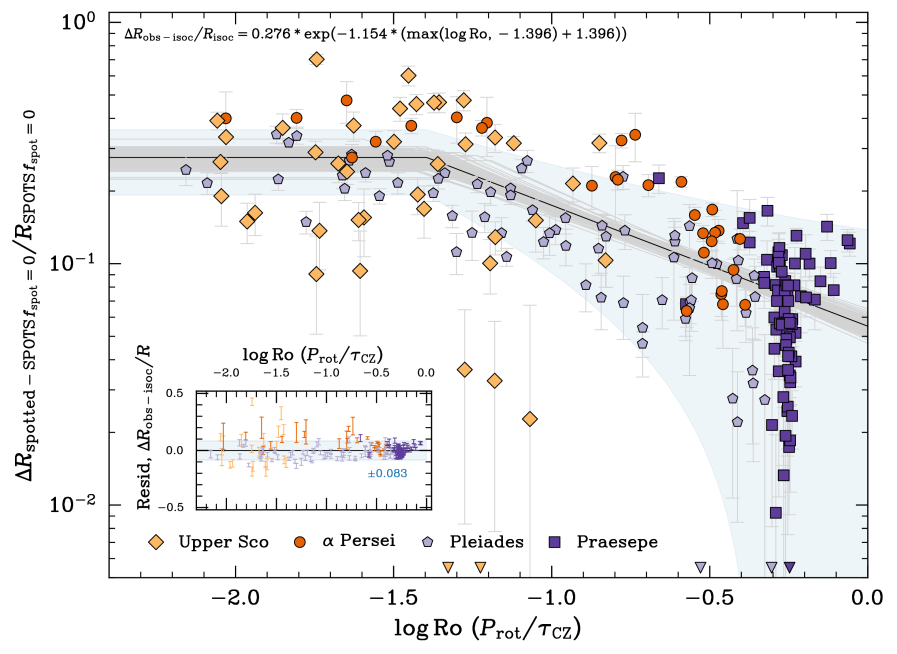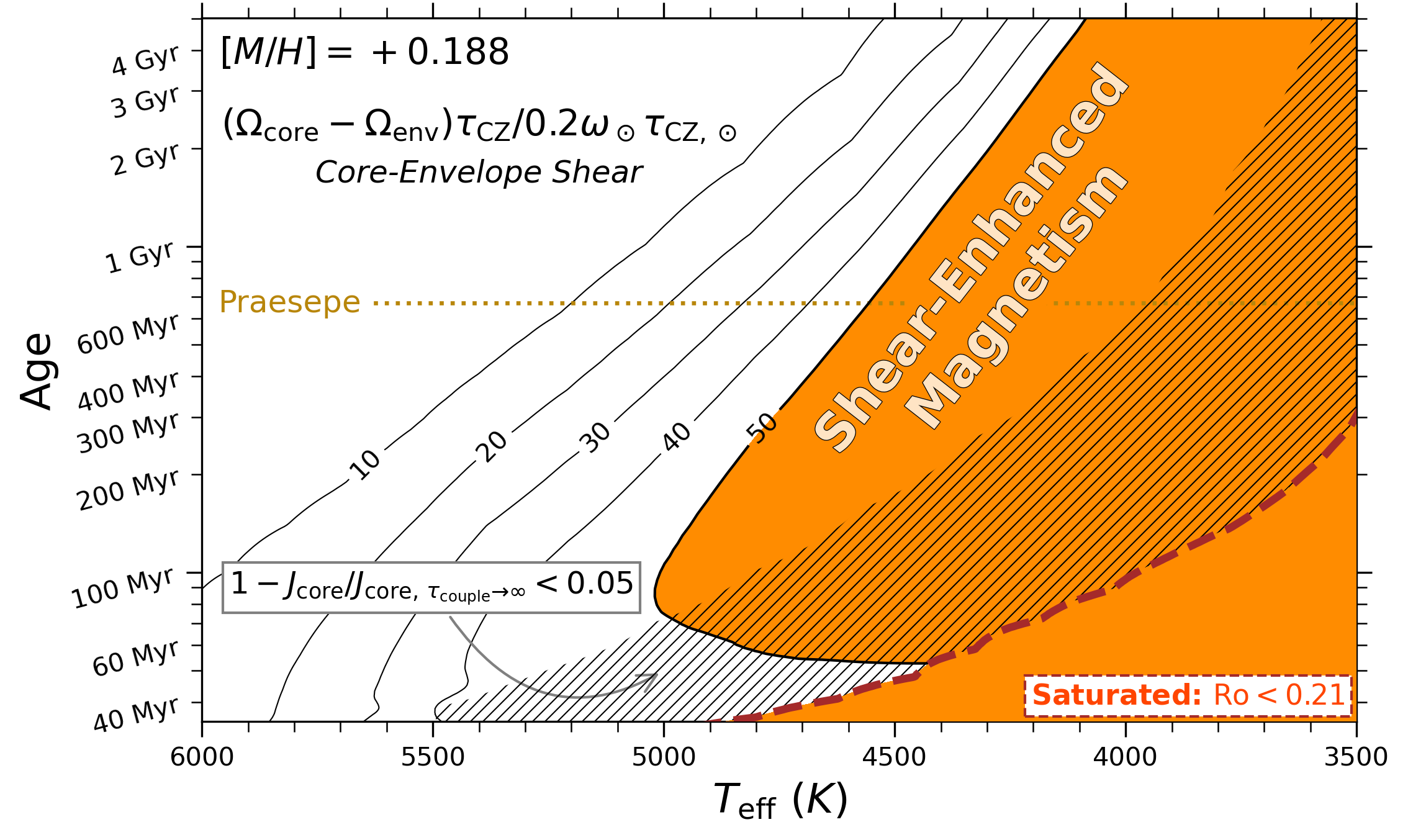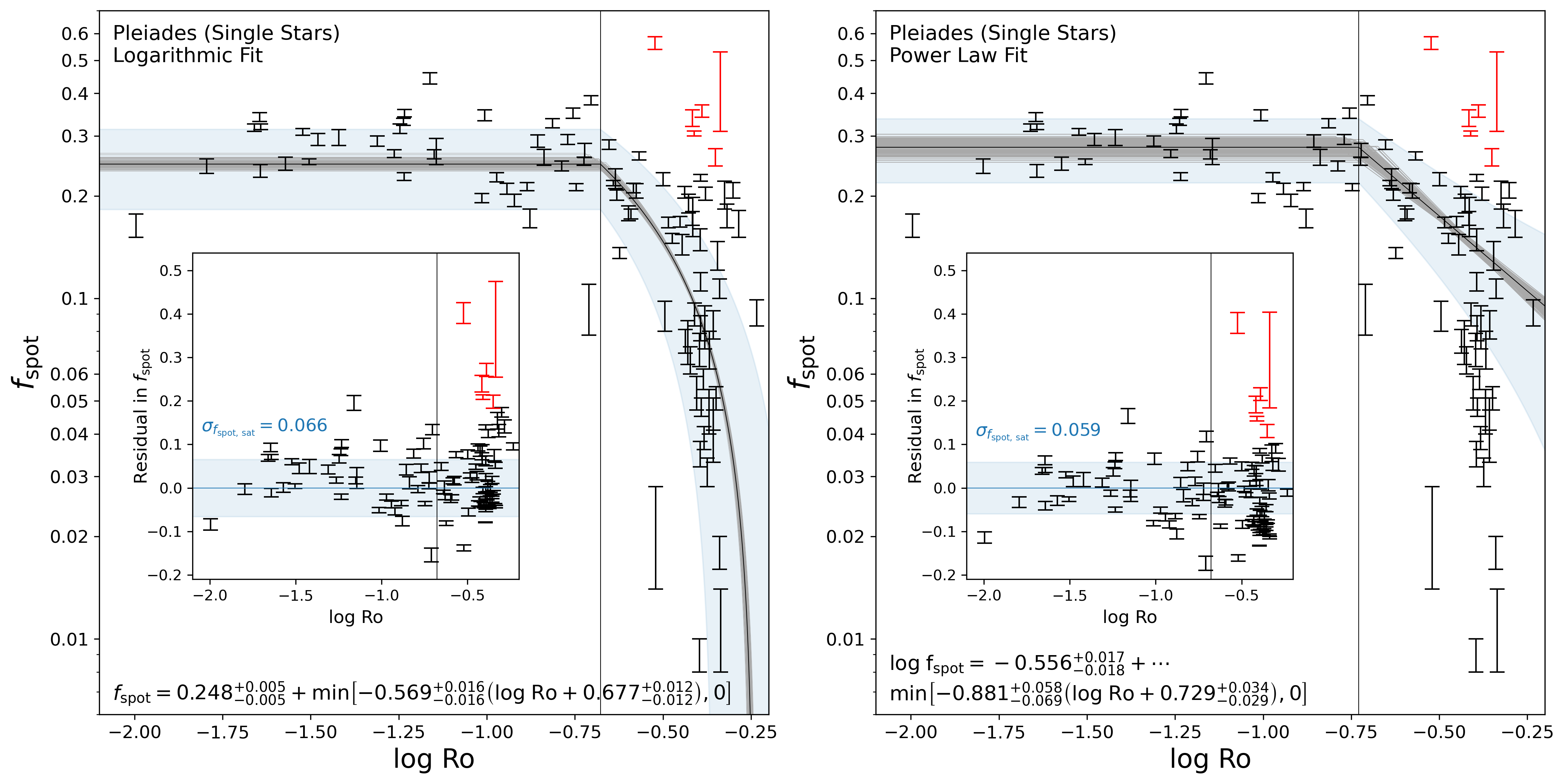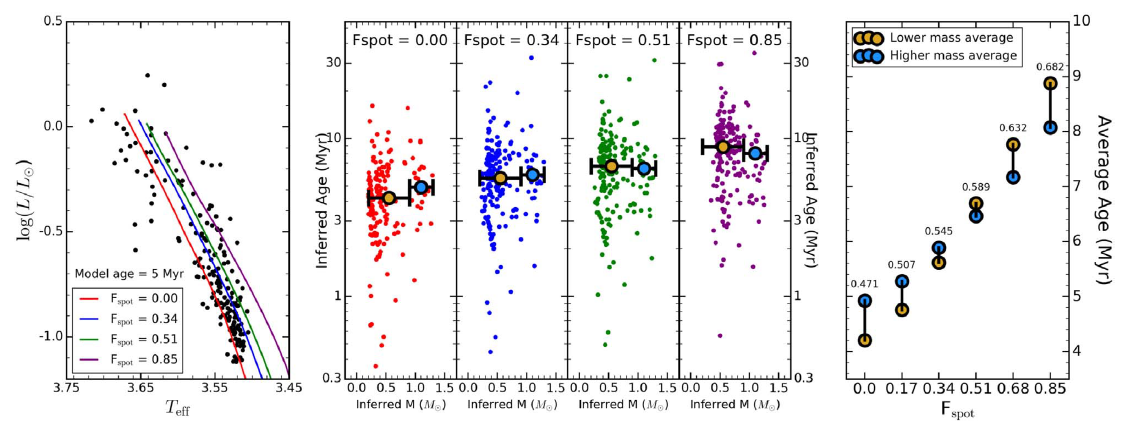Research — Lyra Cao
1. First-Author Papers
1.1. 2025arXiv250618972C

Using data from multiple open clusters spanning ages from 10-670 Myr, we found a persistent radius inflation signal in the inflation–Rossby diagram, with “saturated” and “unsaturated” regimes. That this inflation signal is a strong function of rotation and appears universal for pre-main sequence clusters suggests that magnetism may be the most likely direct cause in the radius inflation phenomenon. We furthermore find that for these low-mass pre-main sequence stars, temperature suppression appears to vary systematically with inflation, in a way that preserves the stellar luminosity. We report that magnetic stellar models (SPOTS) appear to better explain perceived radius anomalies, and performs well globally for pre-main sequence clusters. ADS
1.2. 2023ApJ...951L..49C

We discovered that stars in Praesepe are anomalously over-active precisely as they depart from standard models of rotational evolution—independent evidence for core-envelope decoupling with broad astrophysical consequences. These stars appear to be too slowly rotating to drive magnetic activity with latitudinal differential rotation; however, dynamo action could alternatively be driven in these stars due to a theory called core-envelope decoupling. Core-envelope decoupling, the idea that envelopes can spin down independently of cores for a time, would resolve both the observed magnetic and rotational anomalies. We verify in this study that the overactive region in Praesepe is characterized by strong core-envelope shears and significant core angular momentum evolution. Core-envelope decoupling implies an evolving front of shear-enhanced magnetism affecting low mass stars for billions of years on the main sequence. This shear-enhanced magnetism could potentially perturb standard models of stellar angular momentum evolution and frameworks of exoplanetary habitability—and the unexpected magnetic activity of such stars needs to be accounted for in new studies. ADS Twitter
1.3. 2022MNRAS.517.2165C

We developed a method to measure starspot filling fractions and equipartition magnetic field strengths from survey spectra, applicable to hundreds of thousands of stars in APOGEE. We find a saturation at rapid rotation followed by a decline in our activity—Rossby relation, the saturation representing a genuine maximum in the surface B-field strength. Our technique is robust, producing starspot filling fractions for active young stars and subgiants, as well as for inactive old solar-type stars and giants; starspot filling fractions measured in this manner agree with literature estimates. Strong systematics in effective temperature occur in an activity-dependent manner even at levels as low as 10% in filling fraction; biases at the level of 100 K may occur in analyses which neglect starspots—a finding which may explain previously found radius anomalies. Since starspots perturb stellar structures, we argue that Rossby number should be used as a theoretical output of stellar evolution codes to avoid activity-dependent systematics. We propose this method for recovering a large set of homogeneous magnetic field strength measurements in an upcoming catalog dataset. ADS Twitter
1.4. 2022ApJ...924...84C
In the Orion star-forming complex, and for young pre-MS stars around 1-10 Myr, spotted evolutionary models produce systematically older ages and appear to be more consistent between low mass and high mass stars. It appears that low mass stars that would otherwise be considered too young are appropriately aged with the rest of the cluster with this method. The luminosity spread appears to be persistent even with a star-by-star treatment of interstellar extinction. ADS
2. Selected Contributing Papers
2.1. 2020ApJ...891...29S

Employing a two-temperature mixture model from 2015ApJ...807..174S, Garrett generates grids of starspot evolutionary tracks with the additional modelling parameter \alpha, which is a function of starspot filling fraction f_{\mathrm{spot}} and spot temperature contrast x, for grids of models from 0.1—1.3M_{\odot} and 0—85\% spot filling factor. Tests of these evolutionary tracks suggest that they explain anomalies in mass-radius and H-R diagram space in eclipsing binaries, age trends between the low and high mass populations in Upper Sco, and the sub-subgiant population in M67. Link on ADS